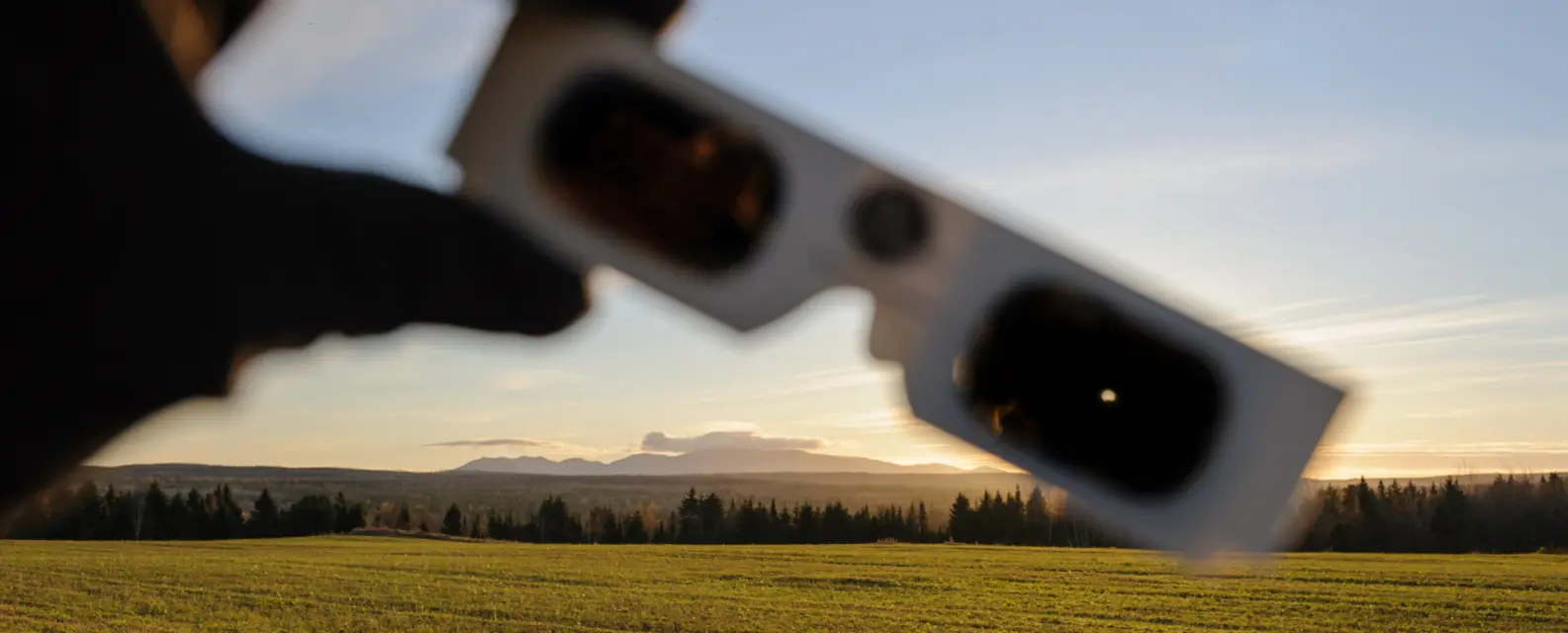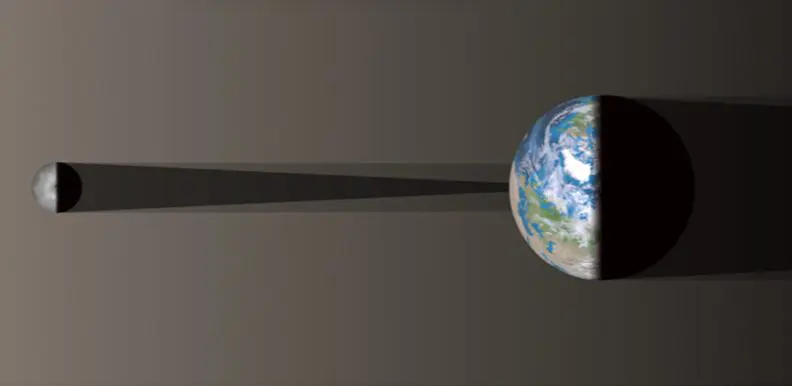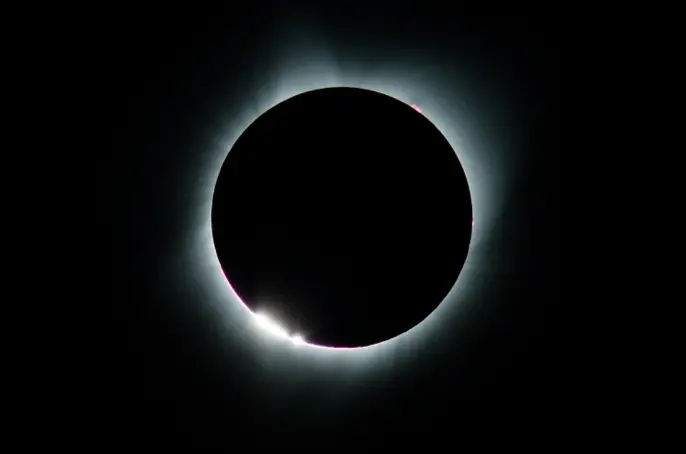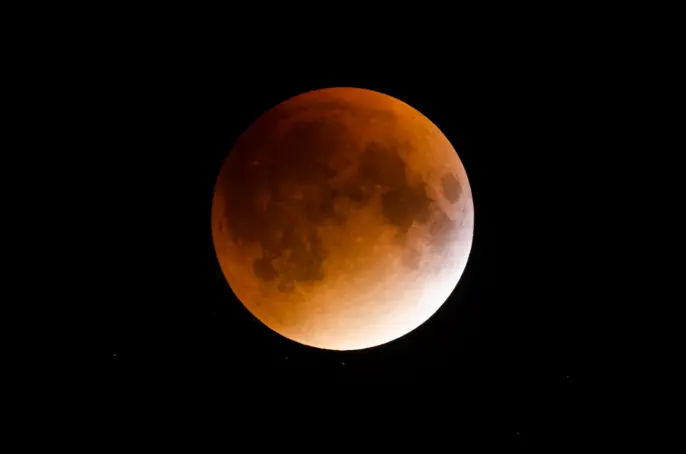

ECLIPSE
Broadly speaking, an eclipse is an astronomical phenomenon where, from a certain viewpoint, a celestial object blocks a light source in outer space. From the perspective of earthbound skywatchers, eclipses typically involve the Sun, the Earth, and the Moon.
CELESTIAL ALIGNMENT
For an eclipse to occur, all three celestial bodies involved need to be aligned along the same axis. From our planet, we can see two types of eclipses: lunar and solar.
Solar eclipses happen when the Moon casts its shadow on the Earth.
As for lunar eclipses, they happen when the Moon passes through the Earth’s shadow.
But whatever the type, an eclipse is a spectacular sight. Don’t miss your chance to see one!


PREDICTABILITY
Thanks to the regular movements of the Earth, the Moon and the Sun, lunar and solar eclipses can be precisely predicted. Counting both types, between two and seven eclipses happen every year. These eclipses can be total, meaning the Sun or the Moon is entirely hidden. They can also be partial, meaning the Sun or
VISIBILITY
Your ability to see an eclipse will depend on your location Lasting up to an hour and a half, total lunar eclipses are visible from much of the night side of the Earth. With a maximum duration of about 7 minutes, the total eclipses of the Sun are visible only from a very limited area of the globe.
In addition to their relative rarity, the spectacle of eclipses is also dependent on the vagaries of weather, which sometimes prevent from admiring their presence. These factors make eclipses an event not to be missed!


